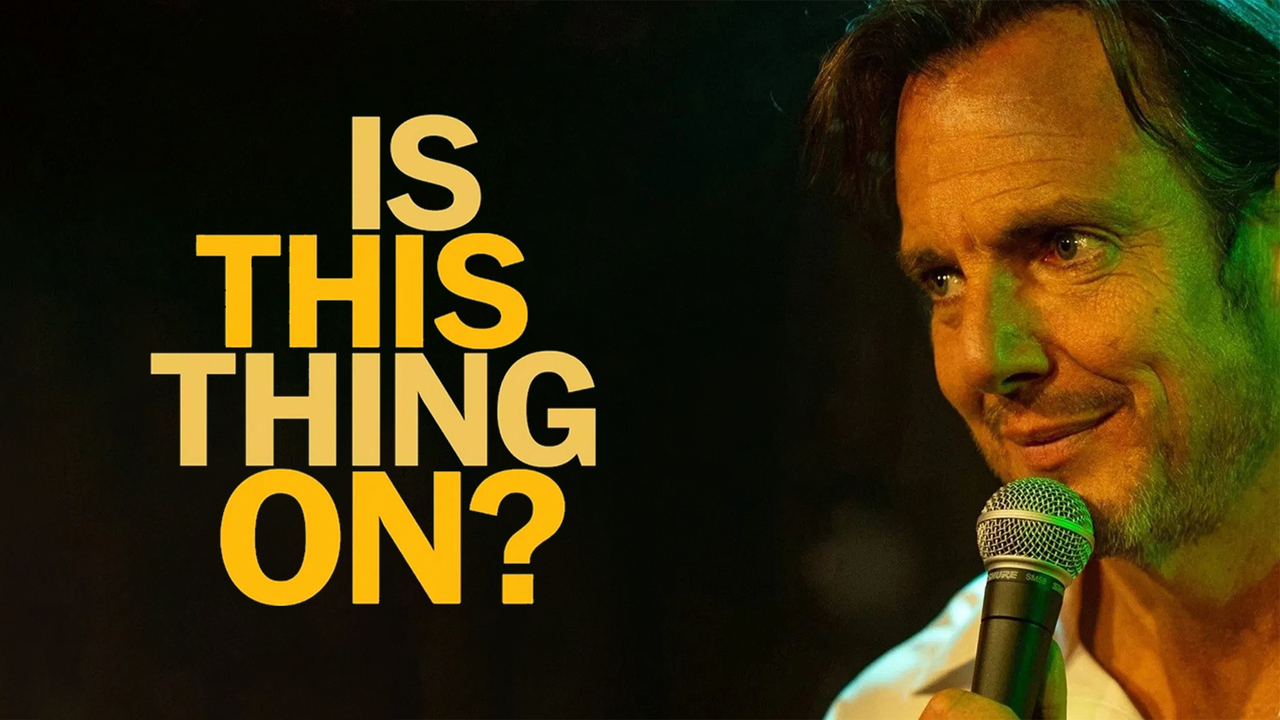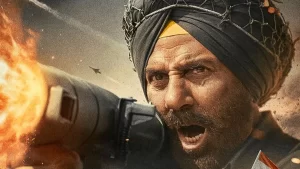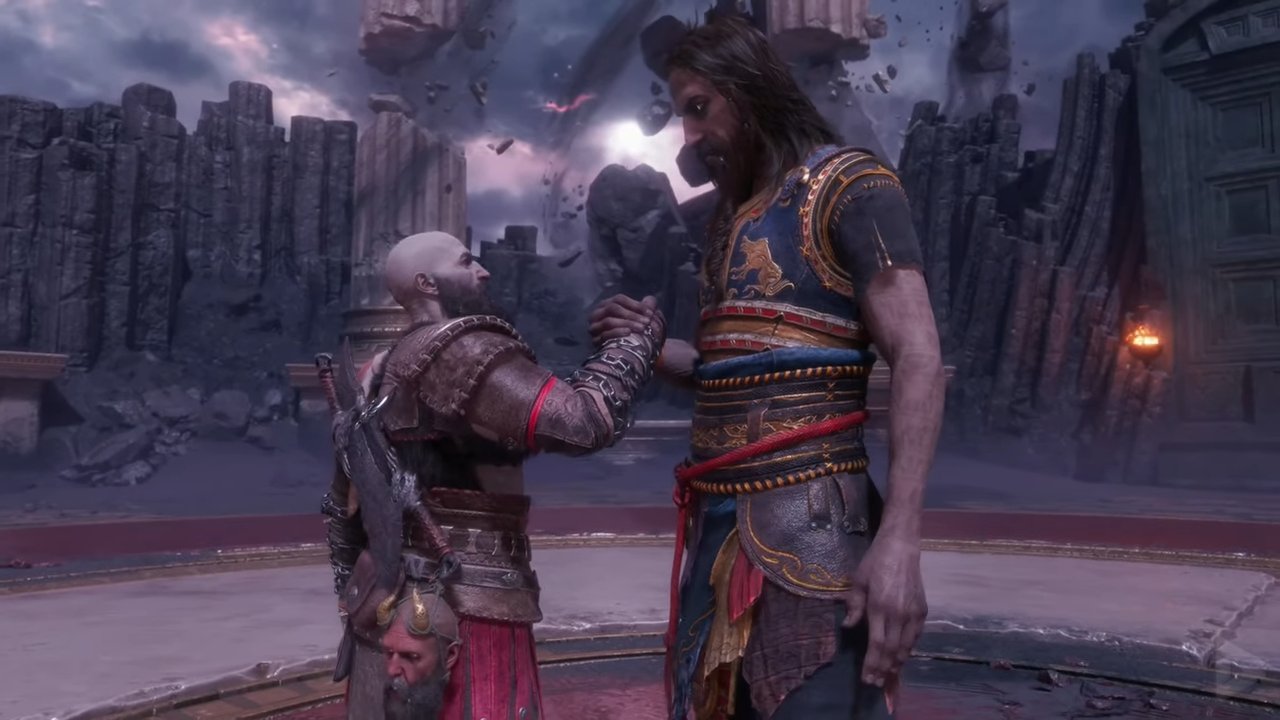
God of War Ragnarok: Valhalla is now out! The Free DLC can be played at any time during the game however, it is recommended that you play it after the main story. This is because it serves as an epilogue to God of War: Ragnarok. Moving on, it was quite clear from the trailer that we’ll be seeing elements from Greek Era of God of War in the DLC. Not only did we clearly see a Cyclopes at the end of the trailer, but we also heard the music from Greek Era, and images of Olympus. Valhalla shows Kratos visions of his past and display the realms as Kratos interprets them. As it happens, Valhalla also leaves multiple solid teases for the future of the franchise. Beware that MASSIVE SPOILERS for the DLC follow below, so read at your own risk.
God of War Ragnarok: Valhalla Hints at Future With Tyr’s Weapons
Since, this is a journey of Kratos’ self improvement, of course his exploits at Greece play a huge role in the DLC. In fact, that is what this DLC is all about as Tyr teaches Kratos many valuable lessons and helps him make peace with his troubled past. During every new attempt, Kratos has to ascend to the higher realms which lead him to timed trials in Greece as he remembers it. Only after completing these timed trials, can Kratos face Tyr at the end of each new quest. As it happens, Tyr has some amazing surprises packed for the fans as he uses the weapons and powers he gained during his time at other lands.
Even if you play without dying in between, the story requires you to fight Tyr 4 different time and each time, he engages you with a different combat styles and weapons. Honestly, we are glad Tyr was on our side and the side of peace in the Norse saga, otherwise it would have been nearly impossible for Kratos to defeat him in a death battle. Anyways, following are the weapons he uses in the 4 fights we engage with him.
Round 1 – Spear and Shield (Norse Pantheon)
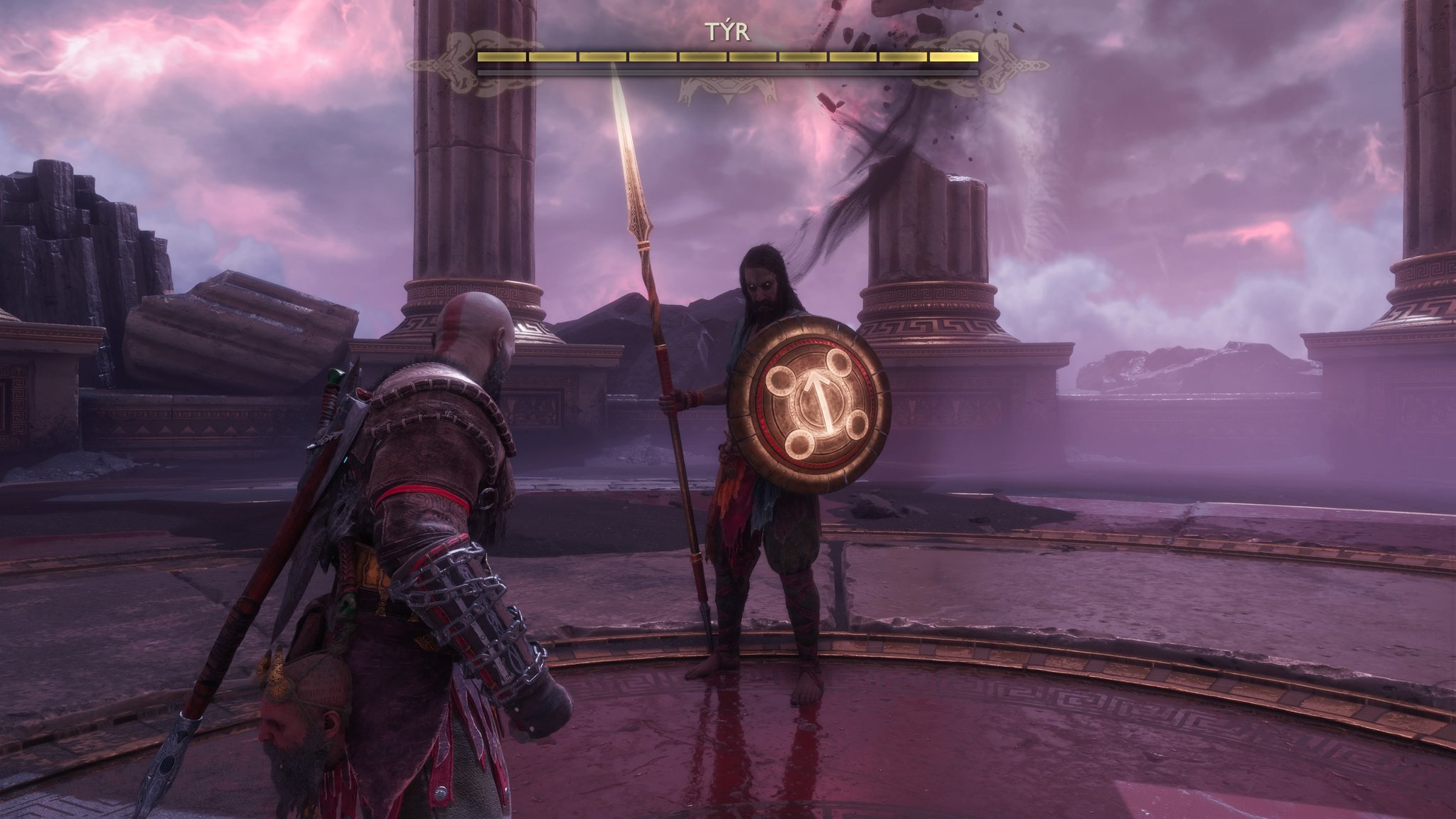
Well, this needs no real explanation since he wields an Asgardian Spear and Shield in the first battle. His battle style is also pretty Nordic and packs no particular surprises. So, let us move on to the hype-worthy fights!
Round 2 – Macuahuitl (Aztec)
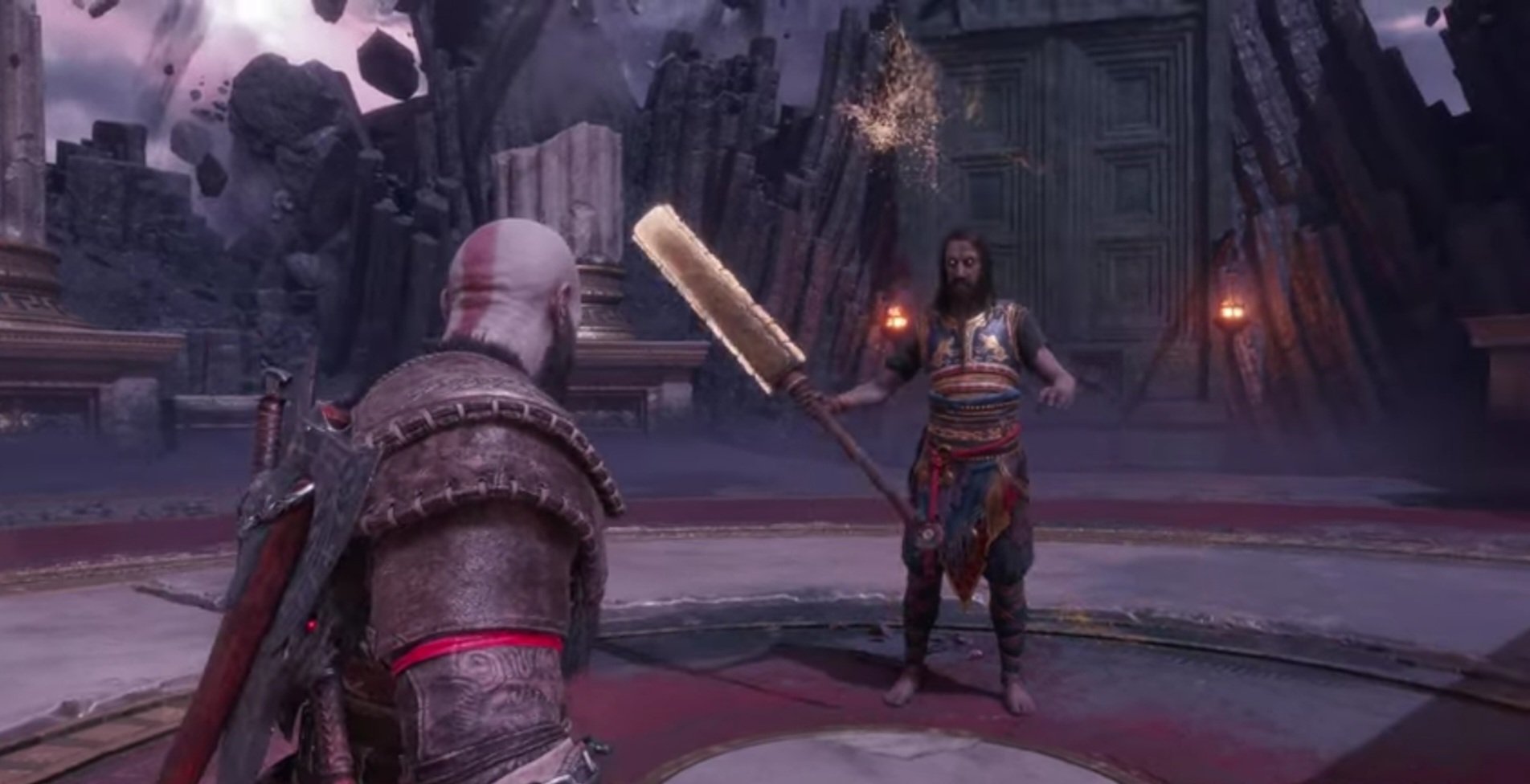
This is where things get interesting as Tyr points out Kratos is not the only one who wields weapons and knowledge of other pantheons. In this fight Tyr wields a Macuahuitl, which is a classic weapon from Aztec Empire. He also does blood magic throughout the fight which was also a essential part of Aztec Mythology. Aztec mythology is the belief system of the ancient Aztec civilization of Central Mexico. It is a complex and rich narrative that includes gods, creation stories, and a pantheon with deities like Quetzalcoatl, Huitzilopochtli (God of War), and Tlaloc. Rituals, sacrifices, and the Aztec worldview were deeply intertwined with their mythological beliefs, reflecting a vibrant and intricate cultural and religious heritage.
Round 3 – Pair of Khopesh (Egypt)

In round 3, Tyr unleashes a pair Khopesh, which is an ancient Egyptian weapon characterized by its distinct curved blade with a flat edge on one side and a convex edge on the other. We also saw him cover Kratos in darkness which is an important element of Egyptian Mythology as the darkness was considered the principle enemy. Egyptian mythology has some well known deities including Isis, Horus, and Anubis with Montu serving as the God of War. Egyptian Pantheon is also the most popular choice among fans for Kratos to venture into next. Also, a cut dialogue from Tyr in Ragnarok hinted that Kratos is destined to meet the God of Dessert, while talking about the mask and pantheons. Why this dialogue was removed from the game is still debated.
Round 4 – Katana (Japan)
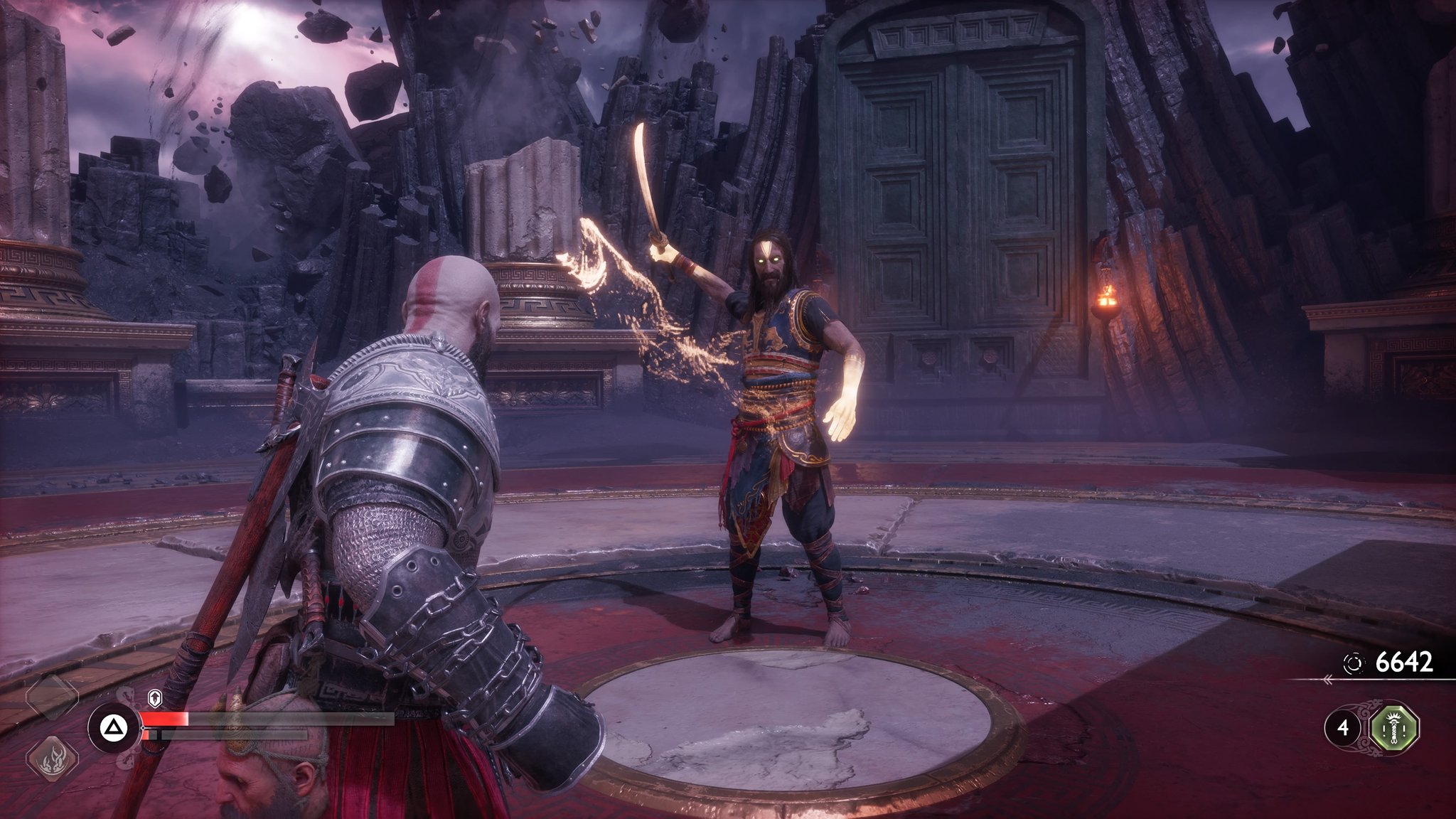
In the final round, Tyr wields a Katana which is a traditional Japanese longsword characterized by its distinctive appearance and sharpness. Cinema, anime and gaming fans must be well aware of this weapon, since it has been quite overused in all media. His combat style was totally Samurai like which includes tons of flips, throwing projectiles, and even creating fake shadows of himself. Japanese pantheon is surely something God of War may dwell into. In fact, Ghost of Tsushima has already incorporated a lot of Japanese mythology and found success. They too have a God of War in the form of Hachiman, alongside a huge list of other gods like Amaterasu, Susanoo, Tsukuyomi, Inari etc.
If Santa Monica has included these references, it surely means that they are cooking something big and t is highly possible we may see Kratos venture into all these Pantheons in the upcoming games. Where do you think Kratos will go next? Let us know in the comments below! God of War Ragnarok: Valhalla is now available to play for free for anyone who owns the game.
If you have any questions regarding God of War, feel free to ask in the comments below. For more content, stay tuned. As usual, like, subscribe and share our articles as we here are trying to build a community of people High on Cinema!



